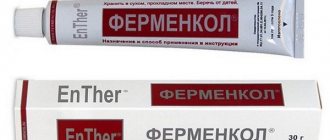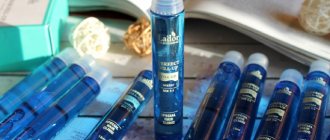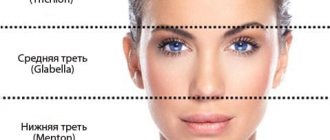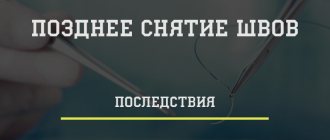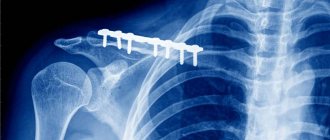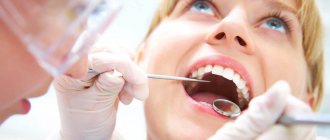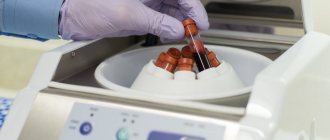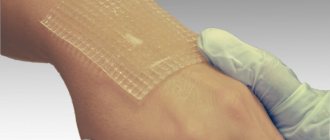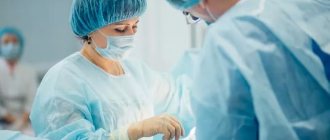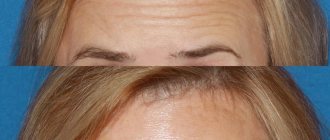Does it hurt to remove stitches? Let's figure it out now. Naturally, any operation is a very unpleasant event that requires great endurance and fortitude. Most likely, it will affect the condition of the body as a whole, and it is possible that for a long time the person will be bothered by slight weakness and somewhat painful sensations in the part of the body that was affected. Of course, today, all unpleasant moments are minimized, but even despite progressive treatment methods, the consequences of any intervention can be the most unpredictable.
What is a postoperative suture?
Any surgical intervention is accompanied by dissection of the skin of the human body or mucous membranes to create access to an organ or cavity for the purpose of diagnosis or treatment. The final stage of the operation is to connect the cut tissues using suture material - this is the postoperative suture.
For each operation, the surgeon selects the optimal suture and the materials from which it is made, which allows the incision to be securely and accurately sutured. The doctor’s choice is influenced by the depth and extent of the wound, as well as the degree of separation of the edges. Surgical sutures differ from each other in the timing of application, the use of different materials, and the methods of applying stitches. The main classification and characteristics are presented in the table.
| Classification | Characteristic |
| By type of seam |
|
| According to its ability to dissolve in tissues |
|
| Depending on the timing of application |
|
| By material type |
|
| By application method |
|
Departure is paid separately - from 550 rubles
Request a call
Call:
+7 (499) 455-08-05
Also, the seams can be single-row or double-row, turned in and out, with different knots. It is quite difficult for a person without special knowledge to understand all the intricacies, so removing postoperative sutures at home is only possible with the involvement of medical professionals.
Hygienic oral care after suture removal
To quickly restore the integrity of the soft tissue of the oral cavity, the patient must:
- Use a soft toothbrush to brush your teeth daily;
- use anti-inflammatory rinses;
- rinse the mouth with warm water or a decoction of medicinal herbs after each meal;
- Avoid eating hard, sour, salty, spicy foods that can irritate the mucous membrane.
Timely removal of sutures, maintaining oral hygiene, and performing procedures prescribed by the dentist will ensure good wound healing and speed up recovery.
When to remove stitches
Recently, special absorbable threads have been used, which over time are independently removed from the human body. The choice of suture material is influenced by the time during which the connecting effect should remain. If it is impossible to use absorbable threads, then regular ones are used, which the doctor removes after the wound has healed. As a rule, in medicine there are certain periods of time between the application and removal of sutures:
- on the abdominal cavity - 7-10 days;
- on the chest - 10-14 days;
- on the head/face/neck - 6-7 days;
- shins/feet – 10-14 days;
- with laparoscopy - 6-14 days;
- after caesarean section - 8-10 days.
It is impossible to determine exactly in advance when and how to carry out the procedure, because the ability of tissues to regenerate is an individual process, on which the timing of suture removal largely depends. The duration of wearing sutures can also be affected by old age, a weakened body, concomitant diseases in the patient, suppuration or infection of the wound.
Order suture removal at home
Promotion
Included in the price:
- Antiseptic treatment
- Removing suture material (suture removal)
- Secondary treatment with antiseptic
- Applying healing ointment
- Applying a bandage
- Necessary materials and preparations
More information about the service
The main indicator that it is time to remove the stitches is the healing of the wound. This can be determined by several signs:
- tightly fused edges of the wound;
- absence of inflammation, redness and pain in the suture area.
It is worth keeping in mind that a procedure performed too early leads to sutures coming apart, and if removal is delayed, there is a risk of wound suppuration and threads growing into the skin. In any case, whether the patient has sutures removed at home or in the hospital, consultation with a surgeon is necessary. Only an experienced specialist is able to assess wound healing, thereby minimizing possible complications.
Factors influencing the healing process
The speed of healing of sutures depends on many factors, which can be divided into several groups:
Features and nature of the wound. Definitely, wound healing after minor surgery will be faster than after laparotomy. The process of tissue restoration is lengthened in the case of suturing a wound after an injury, when there has been contamination, penetration of foreign bodies, and crushing of tissue. Location of the wound. Healing occurs best in areas with good blood supply, with a thin layer of subcutaneous fat. Factors determined by the nature and quality of surgical care provided. In this case, the features of the incision, the quality of intraoperative hemostasis (stopping bleeding), the type of suture materials used, the choice of suturing method, compliance with aseptic rules, and much more are important. Factors related to the patient’s age, weight, and health status. Tissue repair is faster at a young age and in people with normal body weight. Chronic diseases, in particular diabetes mellitus and other endocrine disorders, oncopathology, and vascular diseases, prolong the healing process and can provoke the development of complications. At risk are patients with foci of chronic infection, with reduced immunity, smokers, and HIV-infected people. Reasons related to caring for the postoperative wound and sutures, adherence to diet and drinking regimen, physical activity of the patient in the postoperative period, compliance with the surgeon’s recommendations, and taking medications.
Can I remove stitches myself?
At first glance, it may seem that there is nothing complicated in the procedure for removing sutures. But even a minor mistake can lead to serious problems. Only medical personnel have all the necessary skills and tools, and it is not recommended to remove sutures on your own.
In cases where it is impossible to seek help, at least it is permissible to remove the stitches yourself, but only on small wounds and if you are confident of complete healing. The most important rule is the sterility of instruments. It is also worth considering that it is strictly forbidden to touch the seams:
- after complex strip operations;
- after cosmetic surgery;
- in the case where staples or metal thread are used;
- in the presence of inflammation or suppuration.
If a patient wishes to remove sutures after surgery at home, it would be more advisable to invite a trained specialist than to try to do this on their own, and to carry out the procedure without risk to health.
Recommendations in the late period of rehabilitation
The main task is to create conditions for the speedy healing of the auricle. It is necessary to adhere to a diet based on protein foods. Vitamin complexes and mineral supplements are taken upon request.
Walking is allowed for physical activity. Postpone sports activities. Water procedures are limited. You can wash your hair with baby shampoo, avoiding getting water and hygiene products into the ear.
How long the sutures dissolve after otoplasty depends on adherence to the doctor’s instructions. After six months, a suture will finally form at the incision site.
The duration of the late rehabilitation period is 4-6 months. Only after the passage of time can one evaluate the result obtained.
How do doctors remove stitches?
A doctor or nurse can remove stitches after surgery. A preliminary examination is carried out, and in some circumstances the period of wearing stitches may be extended. There are also cases, for example, with a long cut, when the stitches at the first stage are not removed all, but after one. This is done to reduce the risk of wound dehiscence. The remaining stitches are removed after a few days.
The procedure is carried out using sterile instruments to avoid inflammation and infection of the wound. The seam is pre-treated with antiseptics.
Suture removal includes the following steps:
1. The doctor or nurse, using anatomical tweezers, grasps and lifts the suture knot and carefully cuts the thread.
2. Next, carefully, without applying excessive force, the specialist pulls out the thread. There are several important rules at this point: you cannot pull the knot through the skin, and the thread located on the surface should not get under the skin when removed.
3. The doctor performs the above steps for all remaining nodes.
4. If the sutures are placed in several rows, remove them one by one.
5. At the end of the procedure, the doctor carefully examines the skin for any remaining suture material, then re-disinfects the incision site and applies a bandage with antibacterial ointment.
Departure is paid separately - from 550 rubles
Request a call
Call:
+7 (499) 455-08-05
The procedure is different if a different suturing technique is used or metal staples are used. The correct technique for removing sutures and following all antiseptic rules prevents complications.
Features of the procedure
After the wound at the implant site has completely healed, the surgeon can begin to remove the threads. For the peace of mind of the doctor and the patient, it is recommended to do this with pain relief. Lidocaine-based drugs are most often used for this. Just surface treatment of the gums without injections is enough; gel formulas are ideal for this.
Even a doctor’s assistant can remove the stitches; there is nothing complicated in this procedure, and it takes no more than 5-10 minutes. First, the oral cavity is treated with an antimicrobial agent, and then an anesthetic is applied. The sutures are removed using small tweezers. At this time, the specialist can evaluate the result of the work he has done, and also make sure that there are no complications.
At the end of the procedure, a sterile bandage is applied to the surface of the gum, and the oral cavity is disinfected again. But even after the threads are removed, certain rules should be followed: do not eat too hot or cold food, alcohol, do not smoke and do not get involved in active sports. This is the only way the implant can take root as quickly as possible.
Ways to reduce discomfort
The question of whether it hurts to remove stitches is relevant for all people who have recently undergone surgery. However, patients should not worry about their well-being. After all, modern medicine has many ways that help get rid of discomfort even after complex surgical procedures. To speed up the wound healing process, products such as orange or tea tree oil are used. They are intended for external use. In addition, experts recommend blackberry syrup with the addition of echinacea. This product for internal use accelerates the healing process. It also helps to strengthen the general condition of the body. If a person has recovered sufficiently, the answer to the question of whether it hurts to remove stitches will be negative.
